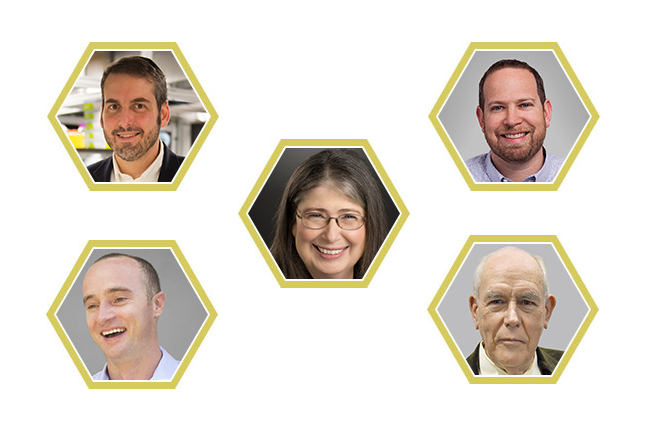Nearly one-third of the 2016 National Inventors Hall of Fame inductees hail from MIT. On May 5, the National Inventors Hall of Fame (NIHF), in partnership with the United States Patent and Trademark Office, will recognize 16 individuals, described as having a revolutionary impact on the nation, at a ceremony in Washington.
One MIT professor worked with two other MIT alumni to create electronic ink. Two addtional alumni honorees worked on projects involving Internet advances, including the spanning tree protocol (STP) and the computer graphics breakthough Sketchpad.
Electronic Ink
Jonathan (JD) Albert '97, a mechanical engineering major, and Barrett Comiskey '97, a mathematics major, worked with MIT Associate Professor Joseph Jacobson PhD '93 to develop a changeable display for as many books as could be stored in a device’s memory. Albert, Comiskey, and Jacobson combined their skills from different disciplines, and in January 1997 they completed a working prototype of electronic ink, the technology cornerstone of the e-reader and e-book industry.
Today, Jacobson is head of the MIT Media Lab’s Molecular Machines research group. Commiskey has relocated to Asia to work on bridging the digital divide for billions of people in developing countries. And Albert teaches product design, engineering, and entrepreneurship at the University of Pennsylvania and is the director of engineering for Bresslergroup, a product design and development firm.
Internet advances: STP, reliable and scalable routing
Radia Perlman '73, SM '76, PhD '88 has played a key role in driving the growth and development of the Internet. Her best-known contribution came in 1985: the spanning tree protocol (STP), which transformed Ethernet from a technology limited to a few hundred nodes confined in a single building, into a technology that can create large networks. Perlman, who received her BS and MS degrees from the MIT Department of Mathematics and her PhD From the Department of Electrical Engineering and Computer Science (EECS) holds over 100 patents and has received many awards, including induction into the National Academy of Engineering, the Internet Hall of Fame, and lifetime achievement awards from the Association for Computing Machinery’s SIGCOMM and Usenix.
Today, Perlman — author of "Interconnections," a widely read text on network routing and bridging, and coauthor of "Network Security" — is a fellow at EMC Corporation.
Sketchpad: A human-machine graphical communication system
Ivan Sutherland PhD '63, an EECS graduate who is considered the father of computer graphics, invented Sketchpad, a human-machine graphical communication system that broke new ground in 3-D computer modeling, visual simulation, and human-computer interaction. Sutherland’s invention enabled users to design and draw in real time directly on the computer display, using a light pen.
Today, Sutherland leads research in asynchronous systems — computers with no global clock — at Portland State University’s Asynchronous Research Center, which he founded in 2008 with Marly Roncken.






